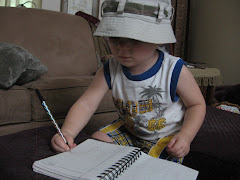Janeczko, P. B. ed. (2005). A kick
in the head. Ill. C. Raschka. Cambridge , MA
On the flap of the dust jacket is this acrostic poem which
describes the contents of the book perfectly:
P lease
O pen this book for something
E xtraordinary.
T wenty-nine poetic forms await you
I nside these pages. How many
C an you master?
F rom sonnets to double dactyls,
O des to limericks –
R aschka and Janeczko (and a frisky
mule)
M ake learning the rules of poetry
S o much fun!
And that is exactly what this book is – a book of 29 poetic
forms, defined and demonstrated by poems from numerous famous poets. The forms include well-known forms such as
couplet, haiku, cinquains, and limericks to lesser known types of poems such as
Persona, Aubade, Pantoum, and Villanelle.
Poets include classic poets such as Ogden Nash and Shakespeare as well
as contemporary children’s poets such as Kristine O’Connell, X. J. Kennedy, J.
Patrick Lewis, Gary Soto and Alice Schertle.
So readers will find pages that name the poetic form in the
corner, the poem in the middle of the page, and the definition at the bottom in
smaller print similar to this:
Senryu
First
day, new school year,
backpack
harbors a fossil . . .
last
June’s cheese sandwich.
Kristine O’Connell George
A senryu follows the same pattern as a haiku –
three
lines of 5-7-5 syllables – but it is about
human
nature rather than about the natural world
around
us.
Gathered by anthologist and poet Paul Janeczko, the poems are follow the rules of
the form, but are accessible to young readers who will enjoy the topics and the
watercolor, ink and torn paper illustrations.
Older readers will enjoy the clear definitions of the poetic form on
each page which will encourage them to analyze the poems for their adherence to
(or departure from) the form’s rules. The older readers will also appreciate the small drawings accompanying the name of each form which cleverly illustrates something about the definition. Creating their own poetry book of forms will be a natural next step for
many writers. This would be a fun
project in a writing workshop environment.
There is a “Notes on the Forms” section at the back with further information
about each form. This book has become
part of my high school classroom library and joins the collection for my
poetry-sharing with my creative writing students. Language Arts teachers of all ages of
students will find this volume to be a wonderful addition to their poetry
collection.



No comments:
Post a Comment